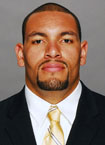Jan 29, 2015Surviving the Summer of Sweat
 By Jason Benguche, MS, CSCS, PES
By Jason Benguche, MS, CSCS, PES
Georgia Tech’s Assistant Director of Player Development for Football shares how he and the other strength coaches in his department work to keep athletes safe from heat illness during the sizzling temperatures that accompany summer workouts and preseason practices.
Like many areas of the country the city of Atlanta has hit some record temperatures over the past few weeks. Labeled as the “Summer of Sweat” by many journalists in the city, statistics show temperatures topping 90 degrees every day in July and 24 days in June. August and September promise to be just as hot.
Factoring in the humidity, the heat index has soared to 105 degrees. For the normal population, individuals can easily avoid the heat and make life much easier. However, regardless of the heat, our summer training has had to continue safely without interruption.
Although the risks of heat stroke and other exertional conditions exist, it is essential that our athletes are exposed and become acclimated to the heat. Once they arrive for pre-season camp there is no hiding from the heat and their bodies will need to be prepared to handle strenuous practices up to twice daily. Here are a few ways we deal with training our athletes outdoors in the heat to prepare for camp and the season to follow.
Working with Sports Medicine
Our ability to train in the excessive heat would not be possible without the help of our sports medicine staff. Whenever training is conducted outdoors, our team of athletic trainers is present. The staff has a real time report of temperature/heat index, which gives us an idea of what we can expect during the training session. In addition, they are well prepared to handle any situation that may arise from training in the heat. They are well equipped with ice, water, an AED, and transportation to medical staff .
Hydration Dehydration is one of the greatest risk factors for individuals suffering from heat exertion. An athlete who is properly hydrated is much less likely to have an issue with a dramatic increase in body temperature during training.
To ensure proper hydration outside of training we give daily reminders of consistent hydration habits during and in-between meals. During training, we ensure rest periods are long enough to allow our athletes to re-hydrate and enhance recovery before beginning another workstation. Our general rule is that if you think you are hydrated, you are almost there.
Training modifications
Proper progression of the volume and duration of our sessions is key to allowing our athletes to acclimate to the heat. Based on the significance of the heat, we will often make training modifications to our scheduled plan.
Our training schedule this summer has helped us greatly in acclimatizing and dealing with the heat. Our early morning sessions allow us to avoid the hottest times of the day. However, many times–even at 6 a.m.–temperatures have been recorded at over 85 degrees.
In the later weeks of the summer we introduce the athletes to late afternoon run sessions in which temperatures are much greater. This gives us a much better opportunity to train in temperatures, which will replicate conditions at pre-season practice. During those sessions, work-to-rest ratios are increased, and the overall volume of our drills can be decreased if we feel that the quality of our work is being reduced due to the heat.
Rest/Recovery/Nutrition
We greatly try to increase the athletes’ knowledge of risk factors during the summer months. In addition to hydration practices, we always reiterate the importance of taking care of one’s body. This comes down to getting a consistent good night rest, ensuring proper fueling strategies with the help of our director of sports nutrition, and taking advantage of recovery strategies in the training room utilizing hydrotherapy.
Observations & Feedback
As strength coaches we are with the athletes more than any other individuals involved in their collegiate athletic careers. We see them during the good days and the bad. This is key in knowing how athletes respond during stressful workouts.
We are vigilant in our recognition of athletes’ responses to training. If a normally fit, competitive athlete begins to have abnormal decreases in performance, looks confused, becomes disoriented, or has difficulty standing we will immediately refer to sports medicine staff and remove them from drills to begin treatment for the symptoms of heat exertion.
In conclusion, the risks of training in the heat are not completely avoidable. It is necessary that our athletes who participate outside in the heat for practices and games are prepared by being exposed to the elements. By making modifications, educating your athletes and with the help of sports medicine, sessions can be planned and organized to ensure that athletes can train safely even when he weather is not ideal.
Jason Benguche, MS, CSCS, PES, is Assistant Director of Player Development for Football at Georgia Tech.



